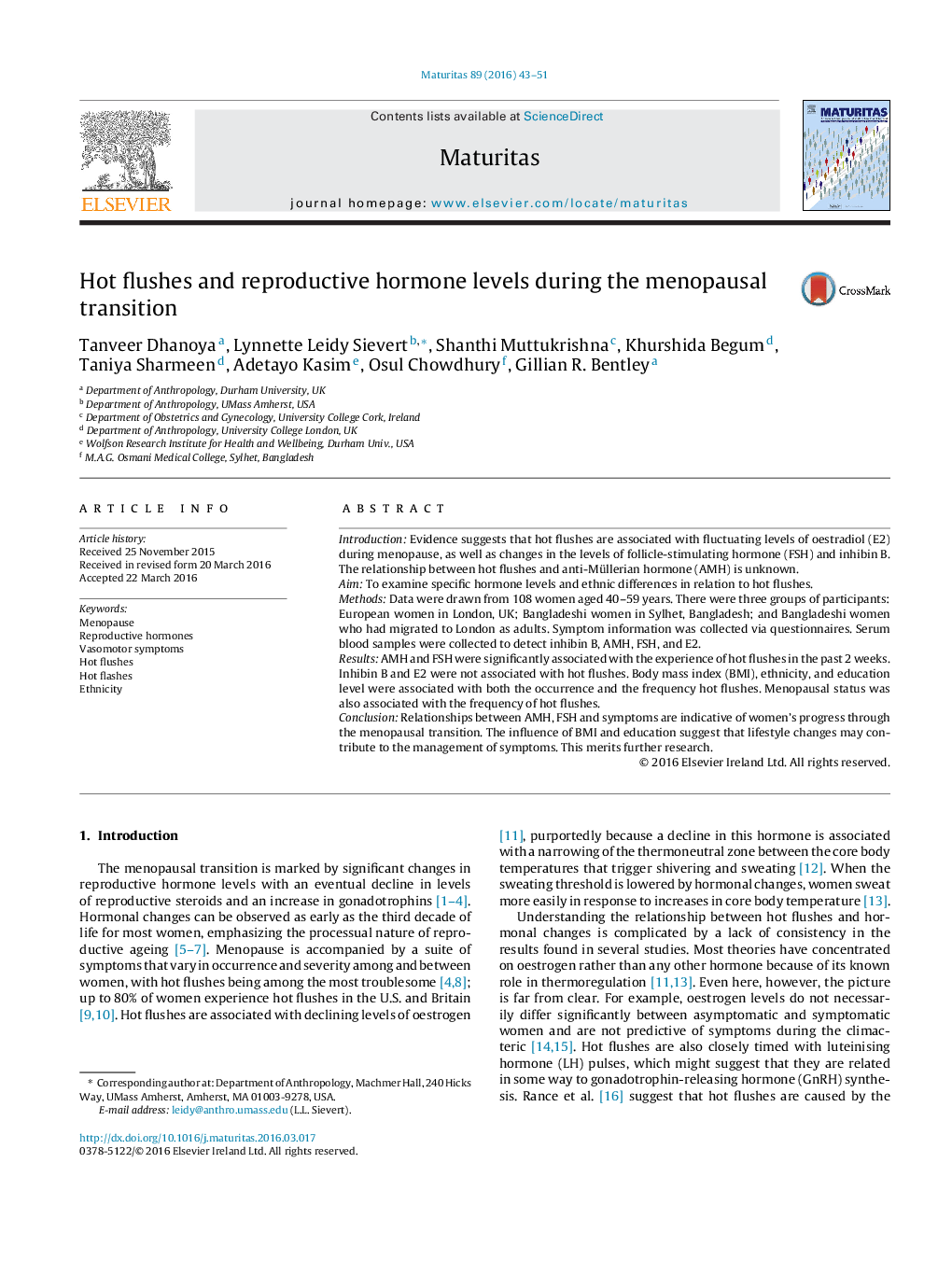| کد مقاله | کد نشریه | سال انتشار | مقاله انگلیسی | نسخه تمام متن |
|---|---|---|---|---|
| 1917006 | 1535298 | 2016 | 9 صفحه PDF | دانلود رایگان |
• Bangladeshi migrants and non-migrants were significantly more likely to report hot flushes than the migrants’ European neighbors.
• Higher levels of anti-Müllerian hormone decreased the likelihood that hot flushes occurred in the past two weeks.
• Higher levels of follicle-stimulating hormone significantly increased the probability that hot flushes occurred in the last two weeks.
• A higher body mass index increased the likelihood of hot flushes, and a higher educational level decreased the probability of hot flushes.
• Inhibin B and estradiol were not associated with hot flushes.
IntroductionEvidence suggests that hot flushes are associated with fluctuating levels of oestradiol (E2) during menopause, as well as changes in the levels of follicle-stimulating hormone (FSH) and inhibin B. The relationship between hot flushes and anti-Müllerian hormone (AMH) is unknown.AimTo examine specific hormone levels and ethnic differences in relation to hot flushes.MethodsData were drawn from 108 women aged 40–59 years. There were three groups of participants: European women in London, UK; Bangladeshi women in Sylhet, Bangladesh; and Bangladeshi women who had migrated to London as adults. Symptom information was collected via questionnaires. Serum blood samples were collected to detect inhibin B, AMH, FSH, and E2.ResultsAMH and FSH were significantly associated with the experience of hot flushes in the past 2 weeks. Inhibin B and E2 were not associated with hot flushes. Body mass index (BMI), ethnicity, and education level were associated with both the occurrence and the frequency hot flushes. Menopausal status was also associated with the frequency of hot flushes.ConclusionRelationships between AMH, FSH and symptoms are indicative of women’s progress through the menopausal transition. The influence of BMI and education suggest that lifestyle changes may contribute to the management of symptoms. This merits further research.
Journal: Maturitas - Volume 89, July 2016, Pages 43–51
